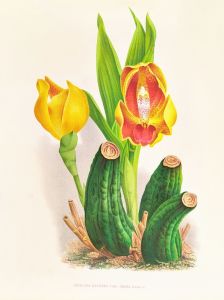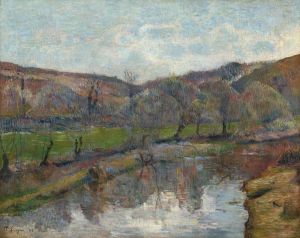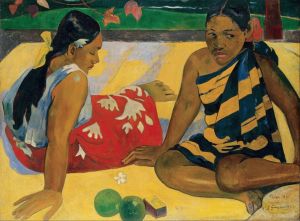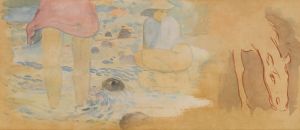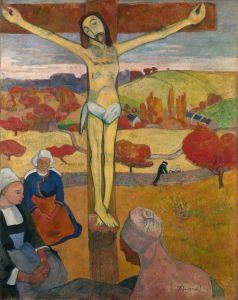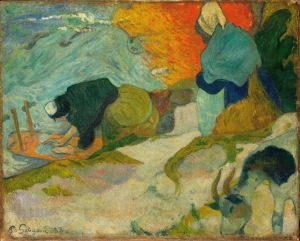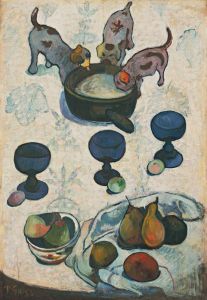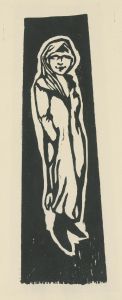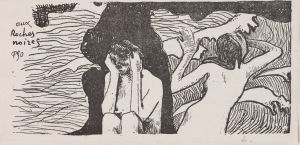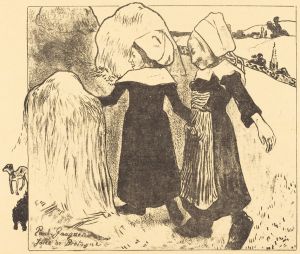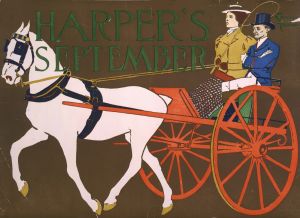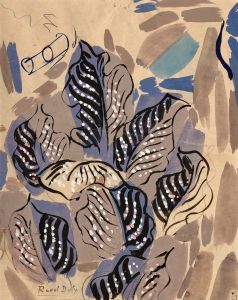
Femmes Animaux et Feuillages
A hand-painted replica of Paul Gauguin’s masterpiece Femmes Animaux et Feuillages, meticulously crafted by professional artists to capture the true essence of the original. Each piece is created with museum-quality canvas and rare mineral pigments, carefully painted by experienced artists with delicate brushstrokes and rich, layered colors to perfectly recreate the texture of the original artwork. Unlike machine-printed reproductions, this hand-painted version brings the painting to life, infused with the artist’s emotions and skill in every stroke. Whether for personal collection or home decoration, it instantly elevates the artistic atmosphere of any space.
"Femmes Animaux et Feuillages" (Women, Animals, and Foliage) is a painting by the French Post-Impressionist artist Paul Gauguin. Gauguin, known for his bold use of color and synthetist style, often depicted scenes inspired by his travels, particularly his time spent in Tahiti and other parts of French Polynesia. This painting is one of many works that reflect his fascination with the exotic and the primitive, themes that were central to his artistic vision.
Paul Gauguin was born on June 7, 1848, in Paris, France. He initially pursued a career in finance but turned to painting full-time in the early 1880s. Gauguin's work is characterized by its experimental use of color and form, which broke away from the naturalism that dominated the art world at the time. He was a leading figure in the Symbolist movement and played a significant role in the development of modern art.
"Femmes Animaux et Feuillages" is believed to have been created during Gauguin's second stay in Tahiti, which lasted from 1895 until his death in 1903. During this period, Gauguin sought to escape European civilization and immerse himself in what he perceived as the more "primitive" and "pure" culture of the Tahitian people. His works from this time often feature lush, tropical landscapes, and figures that blend human and animal forms, reflecting his interest in mythology and the spiritual connection between humans and nature.
The painting depicts a scene rich with vibrant colors and intricate details. It features women, animals, and foliage, arranged in a way that creates a sense of harmony and interconnectedness. The figures are stylized, with exaggerated proportions and simplified forms, which is characteristic of Gauguin's approach to capturing the essence of his subjects rather than their realistic appearance. The use of bold, flat areas of color and strong outlines is also typical of his style, which was influenced by his interest in Japanese prints and other non-Western art forms.
Gauguin's work was not widely appreciated during his lifetime, and he struggled financially and personally. However, his innovative approach to color and form had a profound impact on the development of modern art, influencing artists such as Pablo Picasso and Henri Matisse. Today, Gauguin is recognized as one of the most important figures in the history of art, and his works are held in major museums and collections around the world.
"Femmes Animaux et Feuillages" exemplifies Gauguin's unique artistic vision and his ability to merge the real and the imaginary into a cohesive and compelling composition. The painting invites viewers to explore the rich, symbolic world that Gauguin created, one that continues to captivate and inspire audiences more than a century after its creation.





